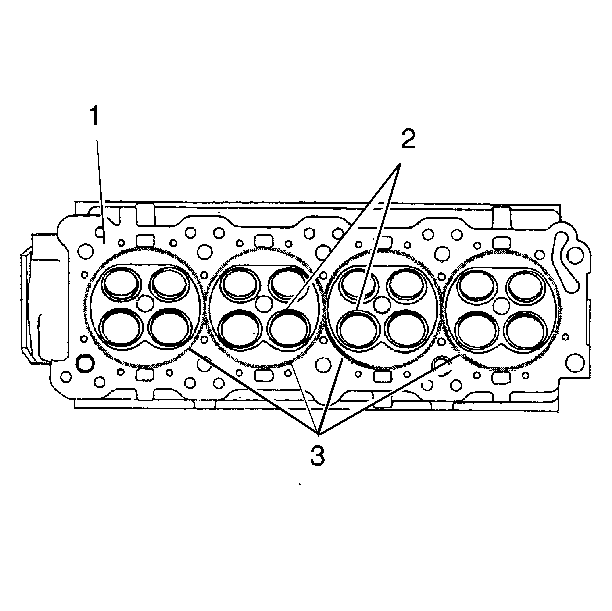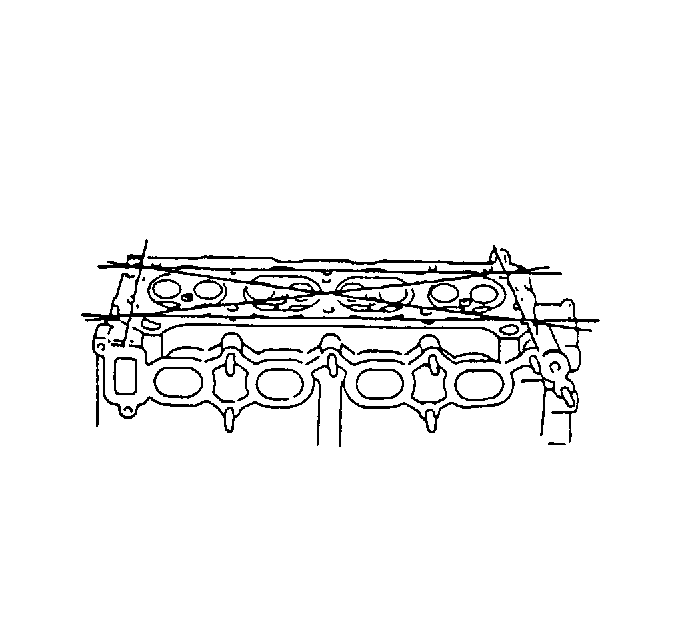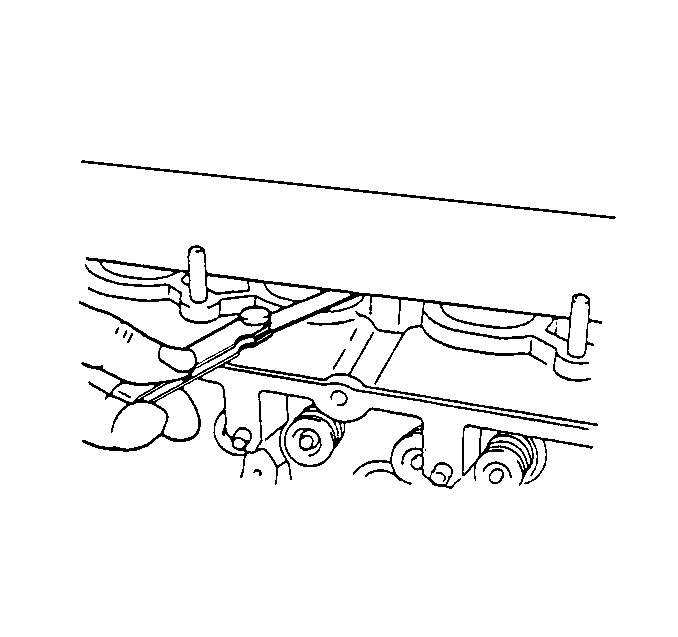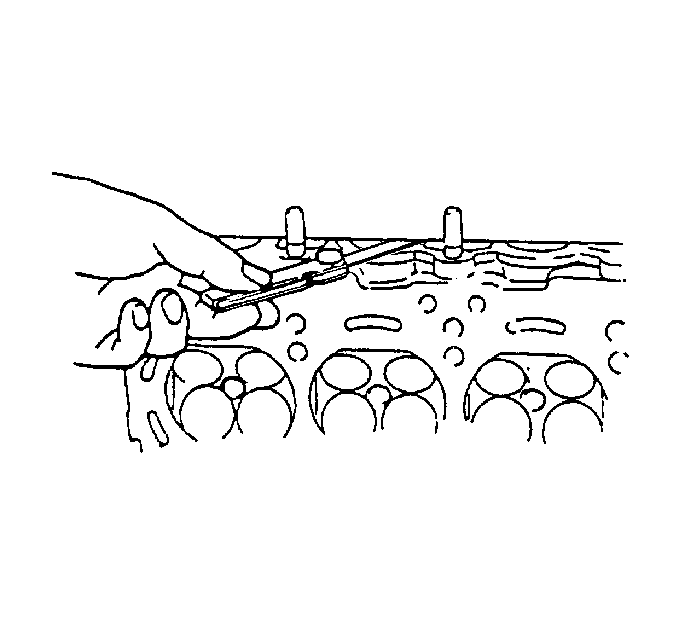Valve Cleaning and Inspection
Important: Do not scratch the valve stem with the wire brush.
- Clean the valves of carbon, oil and varnish. Carbon can be removed with a
wire brush, varnish can be removed by soaking in Parts Immersion Solvent GM
P/N 12345368 (Canadian P/N 10953514) or equivalent.
- Clean the valve guides.
- Inspect the valve stem for wear. The valve stem end may be reconditioned
by grinding.
- Follow the grinder manufacturer's instructions. Ensure the new surface
is perpendicular to the valve stem.
- Inspect the valve keeper groove chipping or wear. Replace the valve
if chipped or worn.
- Inspect the valve face for burning or cracking. If pieces are broken
off, inspect the corresponding piston and cylinder head area for damage.
- Inspect the valve stem for burrs and scratches. Burrs and minor scratches
may be removed with an oil stone.
- Inspect the valve stem for straightness and the valve head for bending
or distortion. Use V blocks. Bent or distorted valves must be replaced.
- Clean the deposits from the valve face. Inspect the valve face for grooving.
- Replace the valve if the face is grooved. Valve faces cannot be machined.
If worn, or damaged, the valves must be replaced.
- The valves may be lightly lapped to the valve seats.
Cylinder Head and Gasket Surface Cleaning and Inspection
- Inspect the cylinder head gasket and mating surfaces for leaks, corrosion
and blow-by. If the gasket has failed, use the following faults to determine
the cause:
| • | Loose or warped cylinder head |
| • | Missing, off location or not fully seated dowel pins |
| • | Corrosion in the seal area around the coolant passages |
| • | Chips or debris in the cylinder head bolt holes |
| • | Bolt holes in the cylinder block not drilled or tapped deep enough |

- Inspect the cylinder head gasket surface.
| • | Cylinder head may be reused if corrosion is found only outside a 4 mm
(0.375 in) band around each combustion chamber (1). |
| • | Replace the cylinder head if the area between the valve seats is cracked
(2). |
| • | Replace the cylinder head if corrosion has been found inside a 4 mm
(0.375 in) band around each combustion chamber (3). |
Important: Do not use a wire brush on any gasket sealing surface.
- Clean the cylinder head. Remove all varnish, soot and carbon to the bare metal.
- Clean the valve guides.
- Clean the threaded holes. Use a nylon bristle brush.
- Clean the remains of the sealer from the plug holes.
- Replace all suspect bolts.
- Inspect the cylinder head for cracks. Check between the valve seats
and in the exhaust ports.
Important: Do not attempt to weld the cylinder head, replace it.
- Inspect the cylinder head deck for corrosion, sand inclusions and blow holes.

- Inspect the cylinder head deck surface
for flatness.
Maximum Cylinder Head Deck Warpage
Maximum Warpage: 0.2 mm (0.008 in)
- If the warpage is greater than the maximum allowed, replace the cylinder
head.
- Inspect all the threaded holes for damage. Threads may be reconditioned
with thread inserts.
- Inspect the sealing surfaces.

- Inspect the cylinder head intake surface
for flatness.
Maximum Cylinder Head Intake Surface Warpage
Maximum Warpage: 0.2 mm (0.008 in)
- If the warpage is greater than the maximum allowed, replace the cylinder
head.
- Inspect all the threaded holes for damage. Threads may be reconditioned
with thread inserts.
- Inspect the sealing surfaces.

- Inspect the cylinder head exhaust surface
for flatness.
Maximum Cylinder Head Exhaust Surface Warpage
Maximum Warpage: 0.3 mm (0.012 in)
- If the warpage is greater than the maximum allowed, replace the cylinder
head.
- Inspect all the threaded holes for damage. Threads may be reconditioned
with thread inserts.
- Inspect the sealing surfaces.




